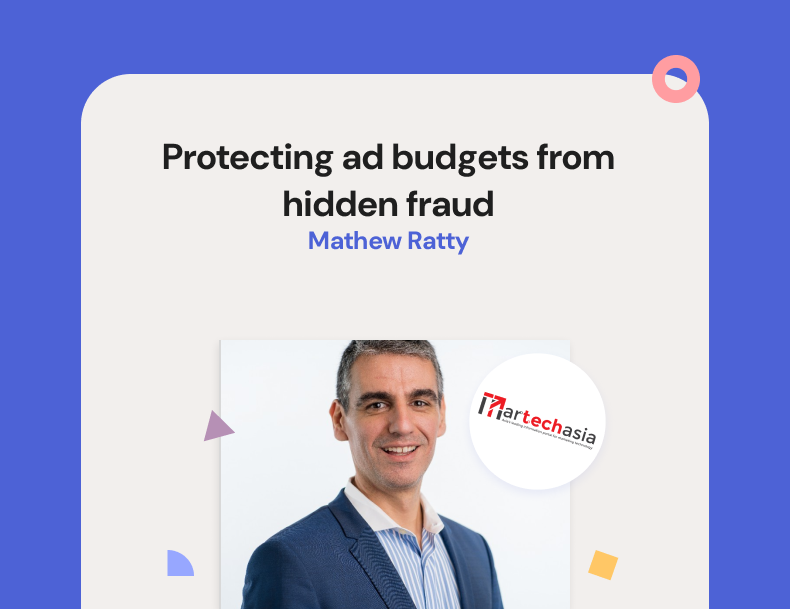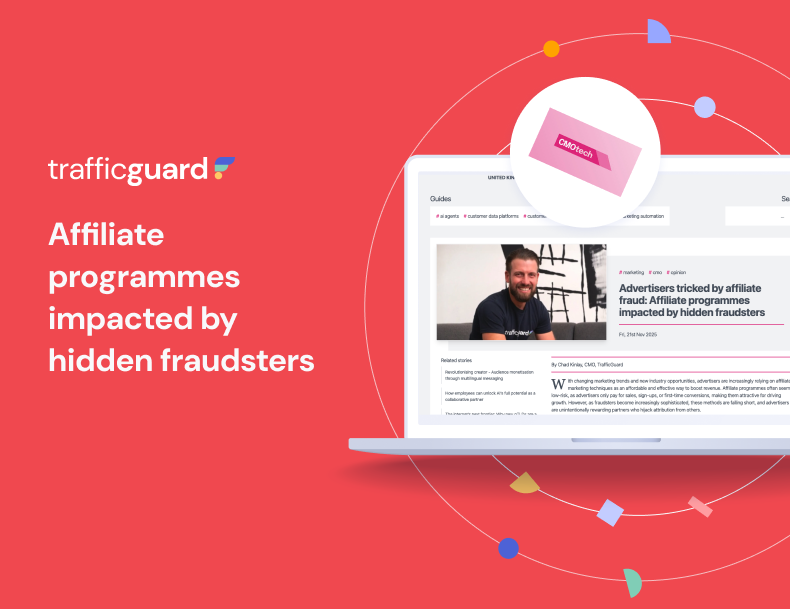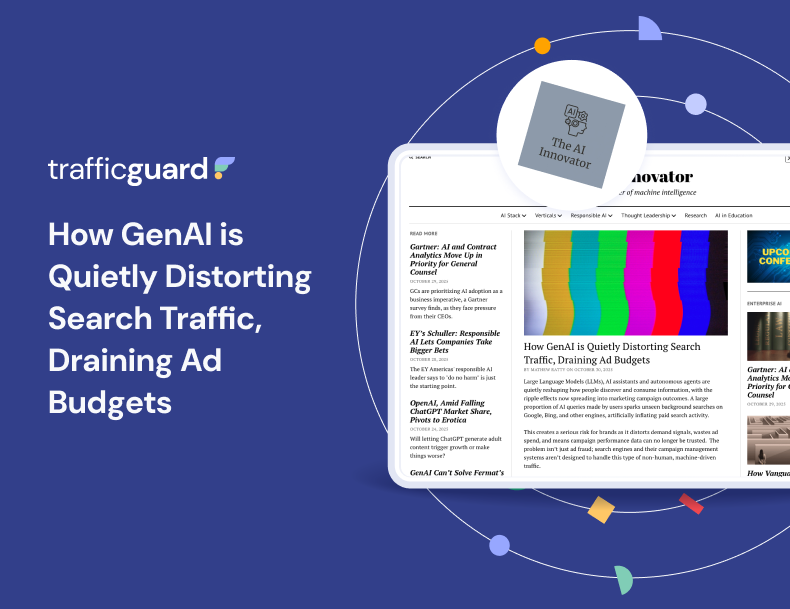The hidden costs of mobile ad fraud

This article was written by TrafficGuard Founder and COO, Luke Taylor for Street Fight.
Some businesses treat the problem of ad fraud as a “tax”, considering it to be an unavoidable cost of digital advertising. Fraudsters siphon up to 30% of any given advertiser’s budget using a variety of tactics, such as app-install farms or click spoofing.
While this wasted spend is certainly of consequence, accepting ad fraud as a tax of doing business assumes that your drained budget is the only side effect (an inherently flawed approach). Ad fraud, if left to run rampant, poses additional threats to your performance and business.
The Hidden Consequences
While the most obvious danger of mobile ad fraud is wasted media spend, there are so many other dangers it poses to your business, including:
- Reduced campaign optimisation: If ad fraud is skewing performance data used to optimise, you and your traffic partners could inadvertently be diverting resources to sources inflated by ad fraud. Accurate and real-time prevention and reporting shared with your traffic sources can help them optimise their sub-partners and site IDs to drive better performance for your campaigns
- Misdirected conversion rate optimisation and retention/engagement: The impact of ad fraud doesn’t stop at advertising. UX and CRO teams rely on data to determine friction and identify opportunities to improve user experience. If the data they use is polluted because IVT on your site or app has led to drop-offs and session abandonment, their efforts can be spent in the wrong areas
- Wasted time of volume reconciliation: When it comes to billing time with ad networks, there is often a manual reconciliation process where the advertiser and ad network determine what has been invalid and what should be billable. This is time-consuming and error-prone and can be mitigated by putting in a solution that prevents ad fraud from claiming attribution in the first place
There are also other broader ecosystem effects that don’t directly affect your business but reduce the effectiveness of the digital advertising ecosystem, for everyone including you.
- Waste downstream: Advertising intermediaries on shorter payment terms are often left out of pocket if they pay a traffic source that is later determined to have delivered fraud by their advertiser client. Latency on quality reporting through to traffic sources leaves them out of pocket and reduces their ability to scale your advertising
- Fraudsters get paid: The more funds flow to fraud, the more attractive and formidable this type of organized crime will become. The more money that flows to fraud perpetrators, the less effective the whole digital advertising ecosystem will be
The Ad Fraud Problem is Only Expected to Increase
The forecasts for the cost and volume of mobile ad fraud are growing exponentially. Obviously, as more of our lives move online, which has been dramatically accelerated by Covid-19, there is a growing opportunity for ad fraud perpetrators. And that’s not going to be the only factor encouraging ad fraud to flourish.
The push toward more privacy-focused browsing environments is likely going to exacerbate the problem of mobile ad fraud. The advertising ecosystem is complex and murky, to paraphrase P&G’s, Marc Pritchard. The industry has been calling out for greater transparency, which is in direct contrast to the privacy-focused direction in which browsers and operating systems are moving. While good for consumer privacy, measures such as eliminating third-party cookies and other identifiers like IDFA reduce transparency in the already complicated ecosystem and make it easier for fraud to masquerade as real human traffic. In mobile app advertising, the function of attribution is going to be significantly impacted by Apple retiring its IDFA in iOS 14 — which is good news for fraudsters and bad news for marketers. Fraudsters will be looking forward to taking advantage of this new shroud of cover, which will see some of their most rudimentary click spam tactics being rewarded by misattribution.
It’s not all doom and gloom, however. We are entering a period that is going to be rife for innovation as marketers and marketing technology companies find new alternatives to the cookie and mobile IDFA.
Learn more: Reactive ad fraud solutions are putting your ad spend at risk
Solving Mobile Ad Fraud “Tax” and Other Consequences
So now that you know the ways ad fraud is impacting your business, how do you solve it? Just like with any other cybersecurity effort, you’ll need a tool that can protect your assets. In order to truly stop ad frauds effects, you should be looking for a solution with two fundamental components:
- Prevention: When fraud is stopped, you don’t waste media spend, it doesn’t pollute your data, optimisation is significantly more effective, and you can safely and confidently scale your ad spend without having to go through time-consuming manual volume reconciliations
- Transparency of traffic quality: Fraud prevention shouldn’t be in a blackbox. You need to be able to see clear and defendable reasons for each invalidation as a demonstration of reliability and effectiveness. You should have access to reporting that shows you how fraud prevention is helping your business overall. That is the difference between adtech that feels like a tax and adtech that is actually delivering value
By protecting your ad spend to fight against the incorrectly perceived “tax”, you’re not only improving the integrity of your performance data but also doing your part to strengthen the digital ad ecosystem as a whole. As more businesses adopt proactive fraud prevention, the flow of advertising funds to fraud perpetrators will slow down — cutting off fraudsters at the source and making it harder for fraud to occur in the first place. Transparency in the ecosystem and protection of individual assets will be the answer to eliminating fraud.
Get started - it's free
You can set up a TrafficGuard account in minutes, so we’ll be protecting your campaigns before you can say ‘sky-high ROI’.
At TrafficGuard, we’re committed to providing full visibility, real-time protection, and control over every click before it costs you. Our team of experts leads the way in ad fraud prevention, offering in-depth insights and innovative solutions to ensure your advertising spend delivers genuine value. We’re dedicated to helping you optimise ad performance, safeguard your ROI, and navigate the complexities of the digital advertising landscape.
Subscribe
Subscribe now to get all the latest news and insights on digital advertising, machine learning and ad fraud.







